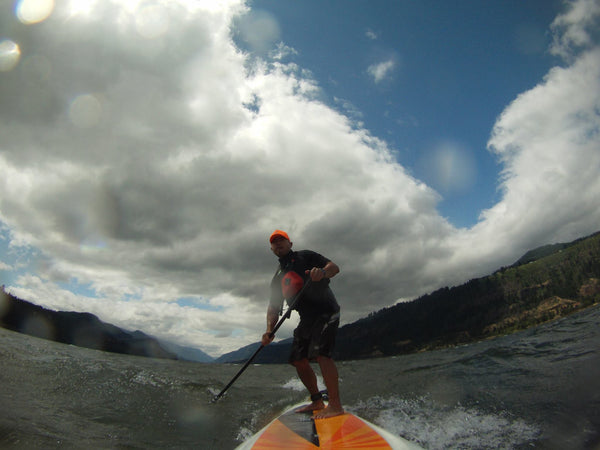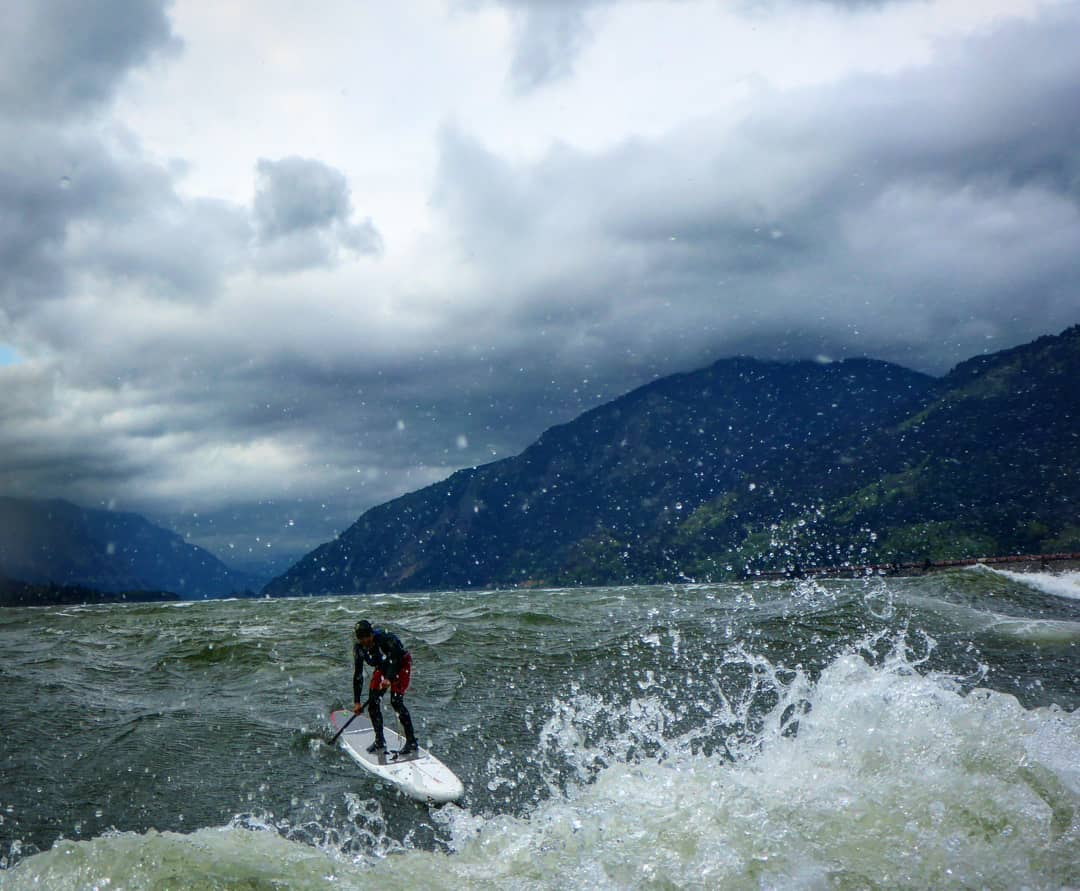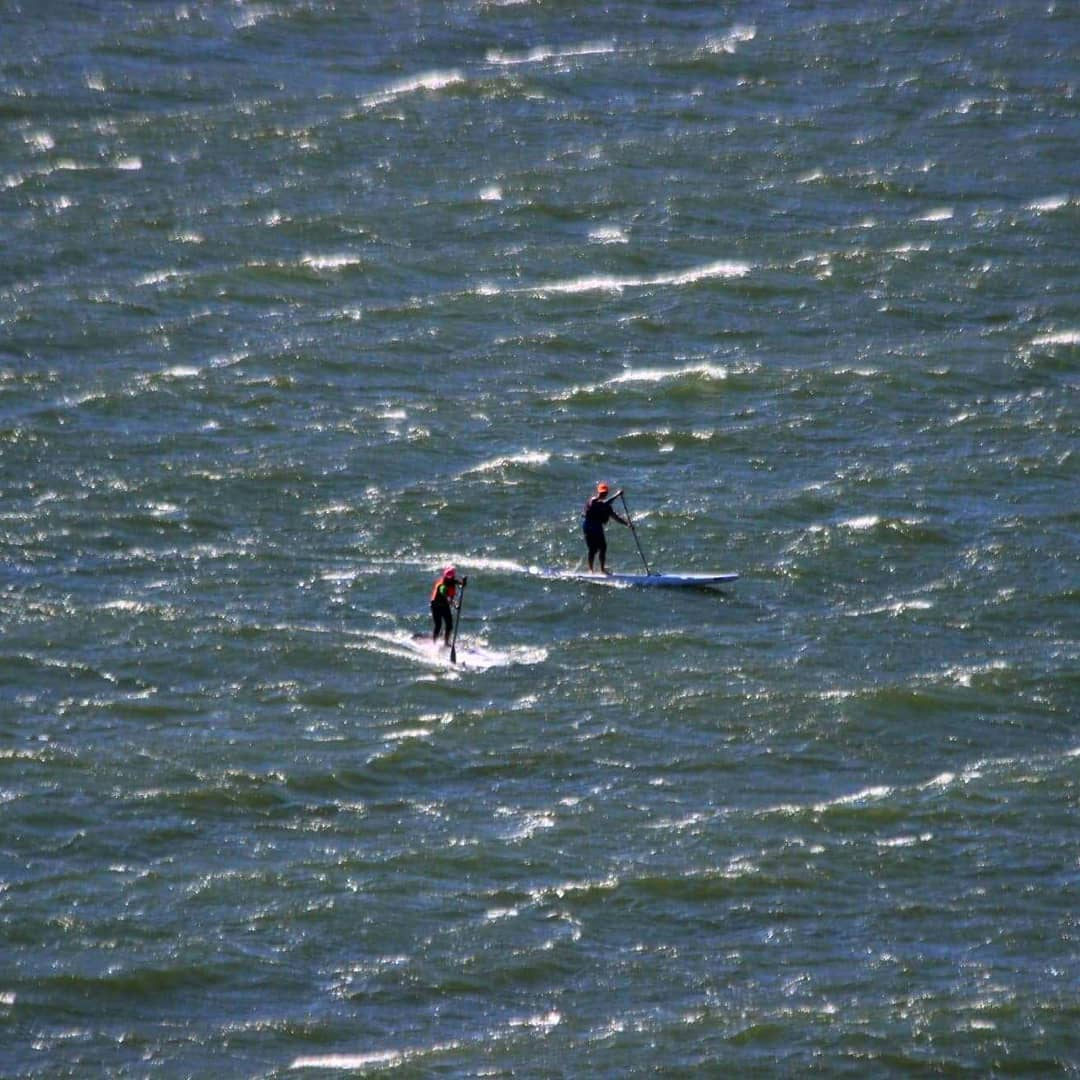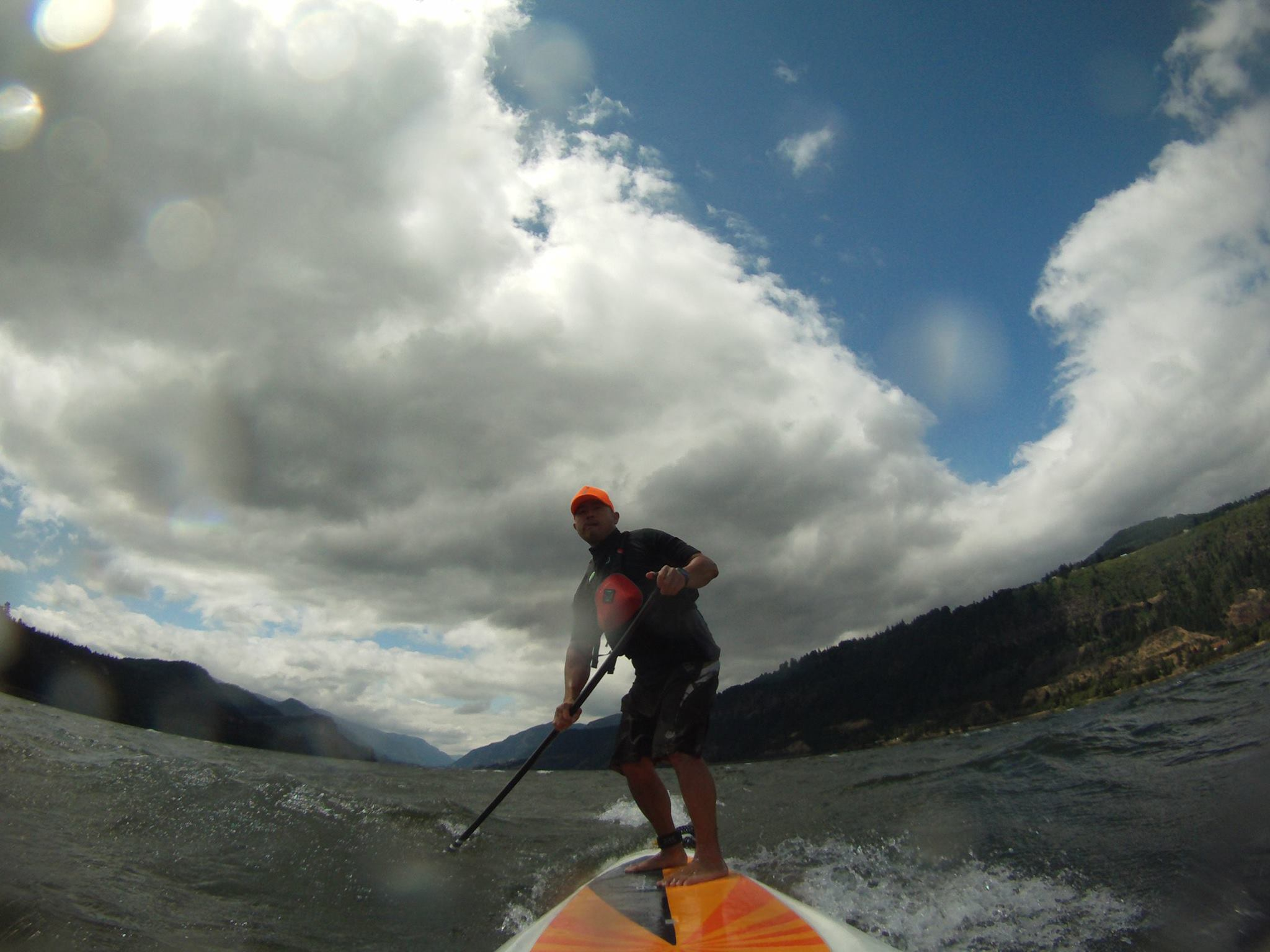
How to Paddle Board in Choppy Conditions
Paddle confidently in chop with the right board and fin setup, a stable offset stance, higher cadence strokes, smart lines in wind and waves, and a safety-first plan—plus quick drills to lock in control.
Choppy water rewards clean technique, tuned equipment, and a steady mindset.
Choose a stable, efficient board (hard with displacement nose or a stiff, properly inflated iSUP), pair it with a medium touring fin, and start in a neutral stance that shifts to a slight offset in side chop.
Run higher cadence with short, early-exit strokes; use low braces and small correction strokes to stay online.
Read angles: shorten and step slightly aft upwind; link bumps downwind; angle slightly into cross-chop.
Plan routes upwind first, avoid lee shores, and dress for immersion.
Wear a USCG-approved PFD, use the correct leash for the venue, and carry comms.
Short drills—cadence ladders, brace taps, offset holds—rapidly build confidence and control.
Table of contents
Learn How to Paddle Board in Choppy Conditions
Chop changes everything. What feels calm and predictable on glassy water turns lively when wind and boat wake stack short, steep waves. Paddling in these conditions is part skill, part setup, and part mindset. With the right board choice, a tuned stance, higher-cadence strokes, and a safety-first plan, you’ll turn sketchy sessions into confident mileage. Read on to learn how to paddle board in choppy conditions.

1) Choose the right board for messy water
Solid vs inflatable.
-
Solid (hard) boards feel more reactive and transmit feedback instantly. Look for touring or displacement noses and moderate rocker so the bow “punches and parts” rather than slaps.
-
Inflatable SUPs can be excellent in chop if they are stiff (proper PSI) and use good fins. Their forgiveness helps when waves throw you off rhythm, and their durability is a plus around docks and rocks.
Length, width, and volume.
-
Length (12’6–14’) gives tracking and glide between wavelets, but requires steadier balance.
-
Width (28–32”) boosts lateral stability; narrower cuts better but punishes sloppy stance.
-
Volume/rocker. Enough volume keeps the nose from pearling; subtle rocker softens landings over short-period waves.
Fin choices.
-
A medium, raked touring fin adds tracking and calms yaw in cross-chop.
-
Slide the fin aft for more tracking (good in side wind). Move it forward for quicker turns (tight marinas, short fetch).
-
Rivers/current are different; use quick-release belt leashes and smaller, more upright fins to avoid grounding—this article focuses on wind chop/open water.
Inflation matters (iSUP).
Run manufacturer-recommended PSI (often 15–20). Under-inflation amplifies flex, which feels like standing on a trampoline in chop.
2) Set up your stance to stay planted
Neutral to offset.
Start with feet hip- to shoulder-width, straddling the carry handle. In chop, shift to a slight offset: front foot a half-foot length forward of the rear. This widens your fore-aft base without fully going surf stance.
Soft knees, stacked hips.
Think mini-squats—hips stacked over heels, knees acting as suspension. Avoid bending at the waist; steer with hips.
Eyes up, horizon locked.
Looking down telegraphs wobble. Keep your gaze up and use peripheral vision to read waves.
Trim tweaks.
-
Nose slapping or pearling? Step back 1–2 inches.
-
Tail feels sticky? Step forward a hair to free it.
You’re seeking “quiet water”: minimal slap/spray as the board releases.
3) Shorten and quicken your stroke
Chop rewards cadence and cleanliness, not giant power strokes.
-
Catch early, exit early. Plant at your toes with a vertical shaft; exit around your feet. Pulling past your heels yaws the board when wavelets knock you off balance.
-
Keep the blade buried during the power phase. Half-buried blades splash and destabilize you.
-
Increase SPM (strokes per minute). A faster rhythm (think 40–55 SPM for many paddlers) stabilizes the hull like a bike that’s moving faster.
-
Smaller blade ≈ easier cadence. If you have options, a slightly smaller carbon blade helps you hold rhythm longer with less fatigue.
4) Use your paddle as a third point of contact
Your paddle is a balance staff in messy water.
-
Low brace. If a side wave knocks you, skim the blade flat on the surface with light pressure to “slap” support back under your center of mass.
-
Draws and mini-sweeps. Correct yaw with small, quiet strokes rather than giant course changes.
-
Plant before you step. When you need to trim fore-aft, put the blade in first, then move a foot—your planted blade anchors you.
5) Read wind and wave angles—and choose lines that help
Head-on (upwind).
Shorten strokes, increase cadence, step back a touch to keep the nose lively, and punch through crests on the catch. Expect lower speeds; define effort by cadence and breathing, not GPS pace.
Downwind.
Shift slightly aft as you accelerate down wave faces to keep the nose from pearling; use quick micro step-backs to link bumps. Exit strokes early to avoid burying the bow at speed.
Cross-wind / cross-chop.
Offset stance is your friend. Load your inside rail lightly and maintain a tiny nose-to-wind angle (5–15°) so you’re not fighting pure beam seas. Let small draws keep you on line.
Wind-against-tide (or strong opposing current).
This stacks shorter, steeper waves. Stay conservative: more offset stance, even higher cadence, and a slightly aft trim to prevent pearling.
Route plan.
Go upwind first so you return with help. Avoid lee shores (wind pushing you onto hazards). If you’re new to chop, work alongshore close to a safe landing.

6) Fitness that pays off in chop
Choppy sessions are interval sessions in disguise. Every crest demands a micro-surge.
-
Core anti-rotation: dead bug variations, Pallof presses, cable chops.
-
Posterior chain: hinges (deadlifts/hip thrusts), single-leg RDLs to mimic stance demands.
-
Pull pattern: rows and lat work improve blade anchoring.
-
Cardio: 2–3 aerobic base sessions + 1 threshold session per week sustain higher cadence.
7) Safety stack: gear, comms, clothing
PFD and leash.
Wear a USCG-approved PFD. Use a coiled leash for flat/open water; in surf, many prefer a straight leash; in rivers/current, only a quick-release belt leash.
Clothing & visibility.
Dress for water temperature (wetsuit/drysuit as needed). Add high-viz elements and a whistle; carry a white light if you’re near dawn/dusk.
Comms.
Phone in waterproof case, or VHF where applicable. Share your route and ETA. Best practice: paddle with a buddy in rough forecasts.
8) Pre-launch checks that prevent rescues
-
Forecast: wind speed/direction, gust spread, rain, thunderstorms, marine advisories, daylight window.
-
Water: temperature, tide/current if coastal or tidal rivers.
-
Equipment: fin tight, leash swivel clean, paddle clamp snug, iSUP at PSI, deck pad grippy.
-
Exit options: mark 1–2 bail-out points alongshore.
9) Fast drills to build chop confidence
-
Cadence ladders: 2 min comfortable / 1 min +5 SPM, repeat x5.
-
Brace taps: paddle 10 strokes, then 3 quick low-brace taps each side while maintaining balance.
-
Offset holds: maintain offset stance for 3–5 minutes in side chop, correcting yaw with tiny draws.
-
Step-back recoveries: plant blade, step back 2–3 inches, pivot a touch, recover to neutral—repeat every 50–100 yards.
-

10) Mindset: calm body, quick rhythm
Expect missteps and splashy catches. That’s normal. Keep shoulders relaxed, breathe on a 2- or 3-stroke rhythm, and measure progress by smoother control, not raw speed. The goal is quiet board, quick cadence, clean exits.
FAQs
What board width is best in chop?
Around 28–32 inches balances stability and efficiency; pick the narrowest you can stand on for an hour without fighting.
Should I lengthen or shorten my stroke?
Shorten and increase cadence; plant early, exit around your feet to limit yaw.
How do I stop pearling downwind?
Shift slightly aft as you accelerate, keep exits clean, and be ready for micro step-backs.
What fin works best?
A medium, raked touring fin set slightly aft calms yaw in side wind. Slide forward if you need quicker turning.
Do inflatables handle chop?
Yes—if properly inflated and paired with a decent fin. Stiffness is key.
How do I correct constant veering?
Shorter power phase, more vertical shaft, tiny inside-foot pressure, and occasional mini-draws instead of big course changes.
When should I call it?
If gusts, whitecaps, or wind-against-tide stack steep, breaking chop beyond your comfort—or if lightning is forecast— postpone and train another day.
What leash is right here?
Coiled for flat/open water, straight for surf, quick-release belt for rivers/current.





